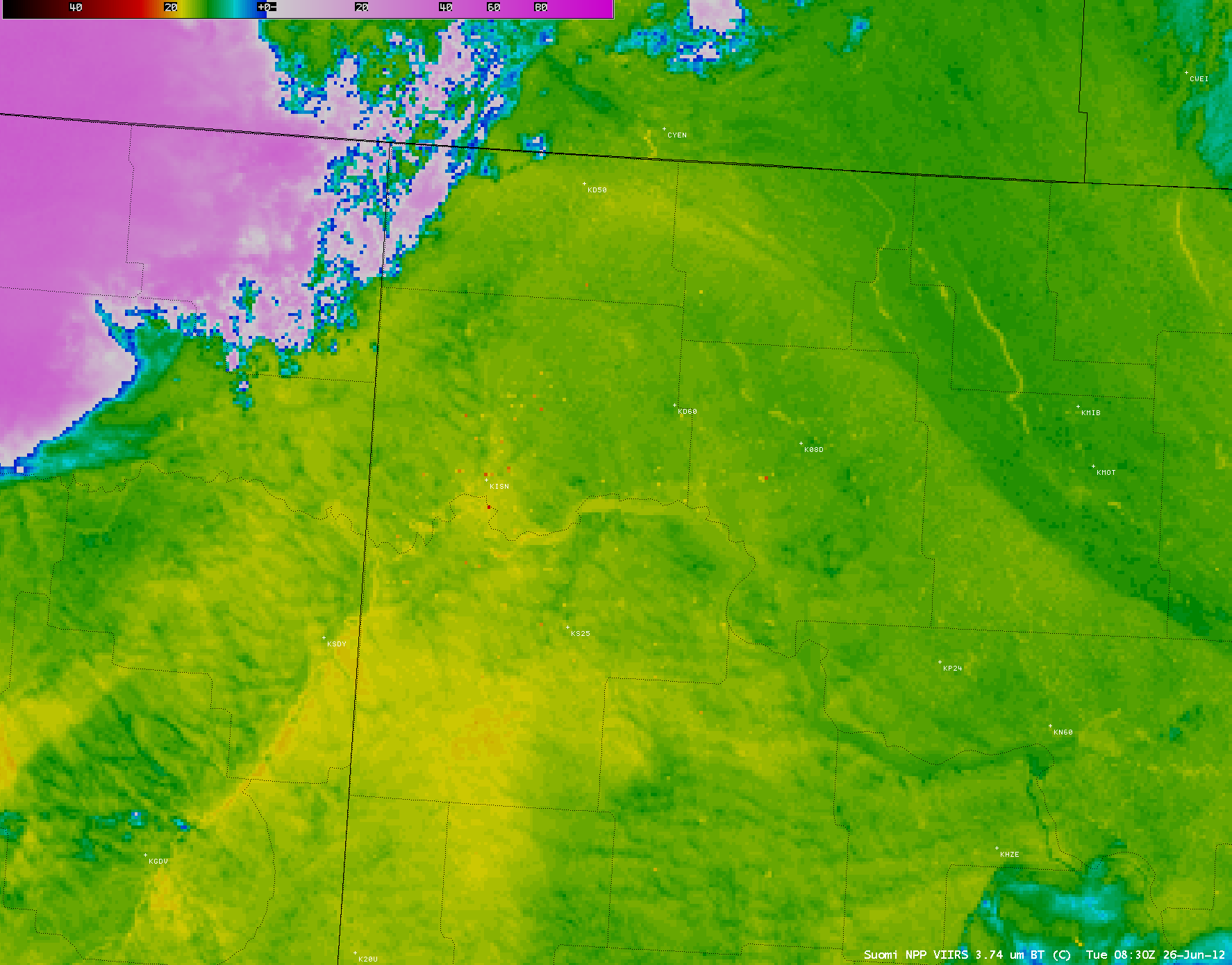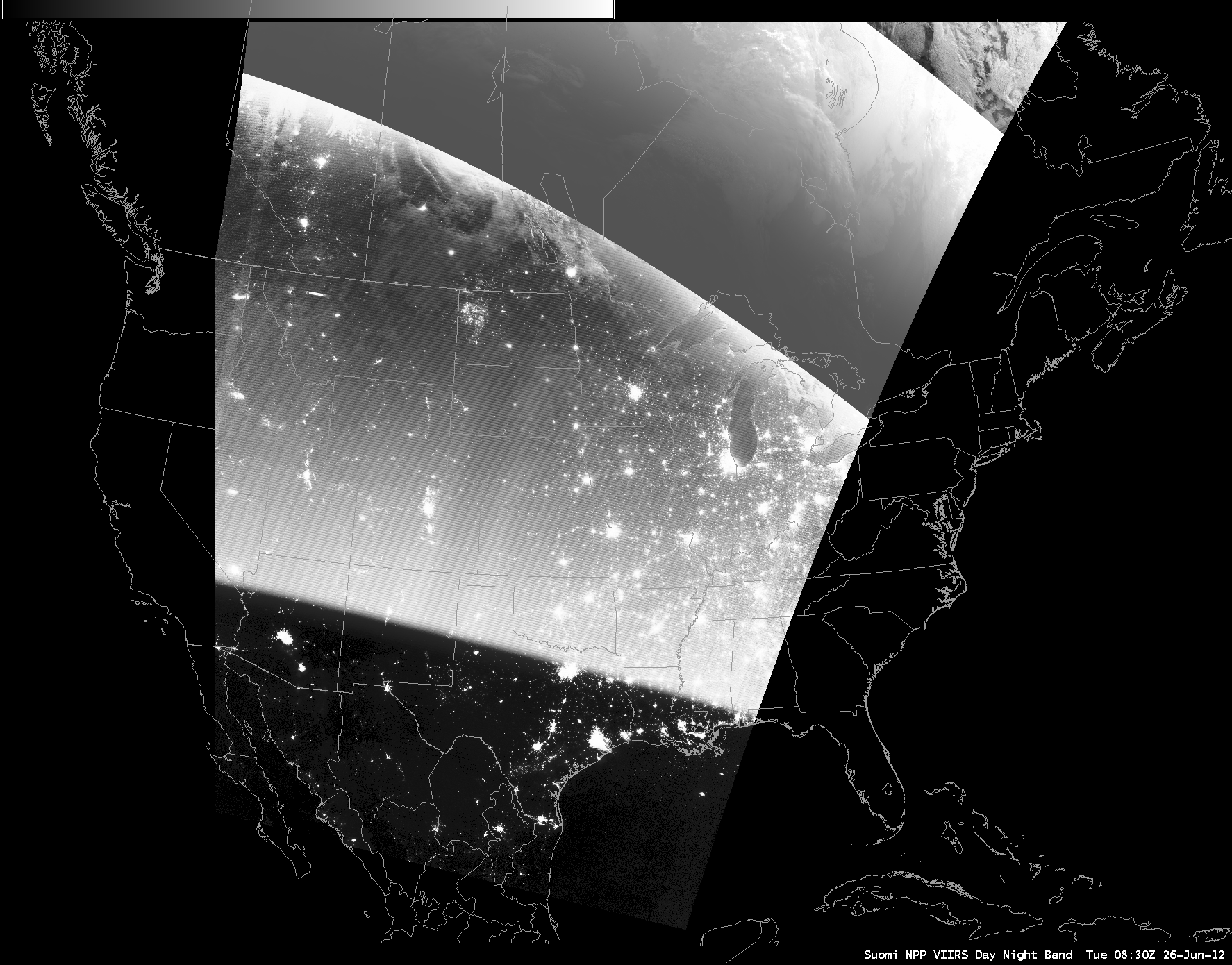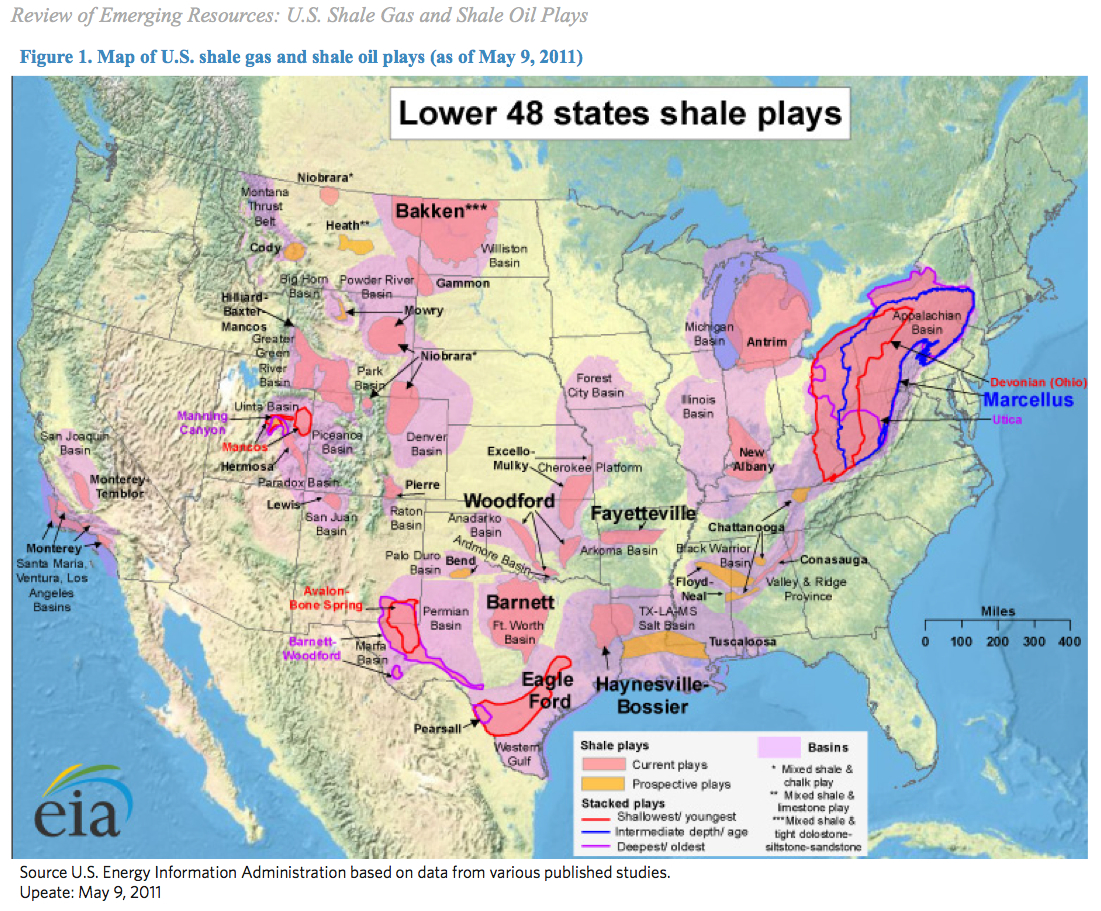Drilling activity in the Eagle Ford (Texas) and Bakken (North Dakota) oil shale formations
Hat tip to Tom Lee (Naval Research Laboratory, Monterey, California) for alerting us to another region of the US where a pronounced satellite signature of extensive drilling operations can be seen using Suomi NPP VIIRS Day/Night Band imagery. A comparison of AWIPS images of 375-meter resolution (projected onto a 1-km AWIPS grid) 3.74 µm shortwave IR data and the corresponding 0.7 µm Day/Night Band data (above) revealed the bright night-time illumination of widespread drilling activity across the Eagle Ford oil shale formation in southeastern Texas at 08:49 UTC (3:49 AM local time) on 25 June 2012. On the shortwave IR image, a number of small “hot spots” (pixels with a darker red color enhancement) could be seen, which were associated with natural gas flares at some of the larger drilling rig sites.
A similar signature of night-time drilling activity had been previously noted on VIIRS Day/Night Band imagery across the Bakken oil shale formation in western North Dakota — and a comparison with the color-enhanced shortwave IR image (below) at 08:30 UTC (2:30 or 3:30 AM local time, depending on the exact location) on 26 June 2012 again showed a number of natural gas flare “hot spots” at some of the larger illuminated drilling rig sites.
Note that there is some striping seen in the Day/Night Band (DNB) image over North Dakota — a view of the entire VIIRS DNB swath (below) shows that North Dakota was located within the “stray light zone” of the Suomi NPP satellite orbit, where some sunlight was reachng the DNB detectors. Farther to the south over Texas, there was no stray ligt contamination evident on the DNB image.
A May 2011 map of the Lower 48 state natural gas and oil shale “plays” (below) suggested that there are likely other regions of the US where similar VIIRS DNB and shortwave IR satellite signatures might be seen.





